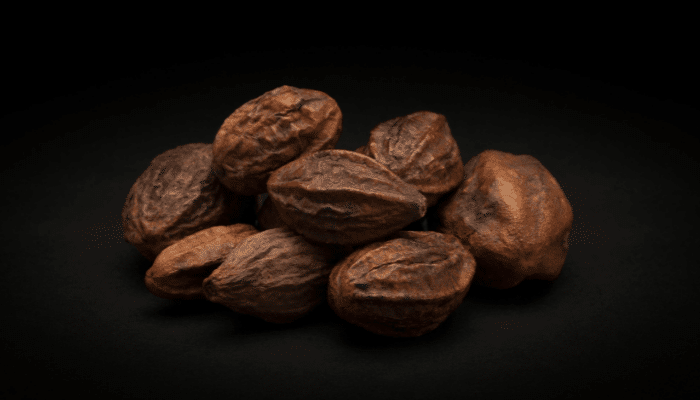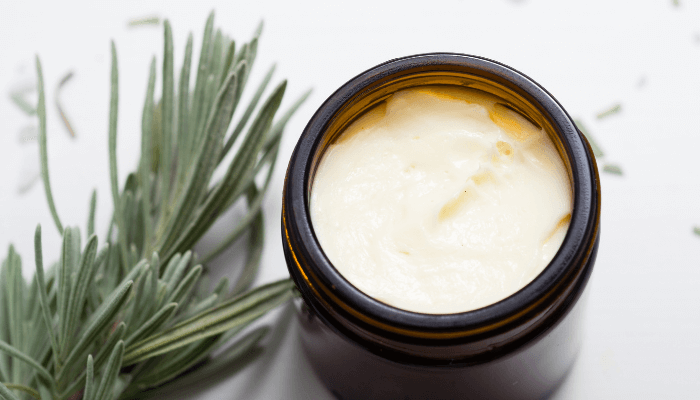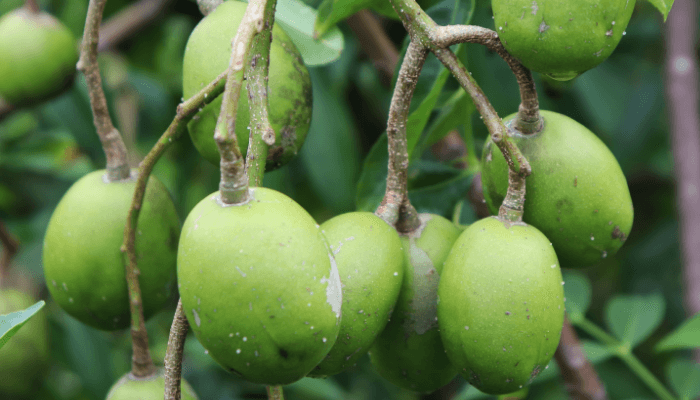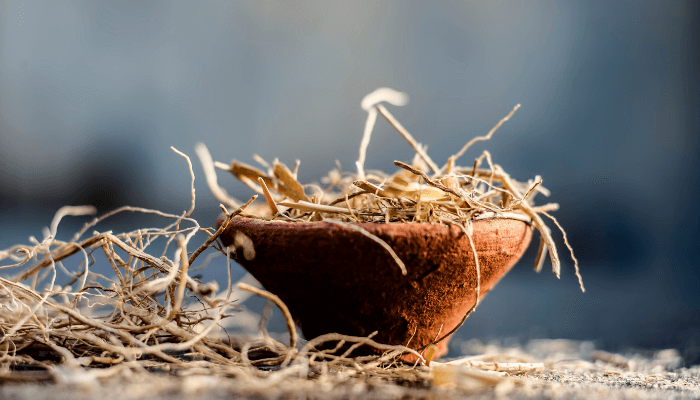All About the Sorrowless Tree and its Health Benefits
The Ashoka tree or the sorrowless tree is endemic to India, Myanmar, Malaysia, and Sri Lanka. It grows naturally in the foothills of the Himalayas.
Sorrowless tree is quite common in India and can be found extensively in central India, including the Deccan plateau, the middle portion of the western ghats and also the western coastal region of the Indian subcontinent.
‘Ashoka’ in Sanskrit means ‘free from grief’ and it is a popular belief that the medicinal properties of this tree bring solace and comfort to the head and the heart. It holds an important place in Ayurveda, as it is known as one of the divine herbs or Divya aushadhi and is said to possess spiritual qualities.
Scientifically known as the Saraca asoca, this tree is a part of the Detarioideae branch of the legume family. It also holds mythological relevance and is revered and considered a pious tree in Hinduism, Jainism and Buddhism. The importance of this tree can be realized from the fact that its beautiful flowers have been made the state flower of Odisha.
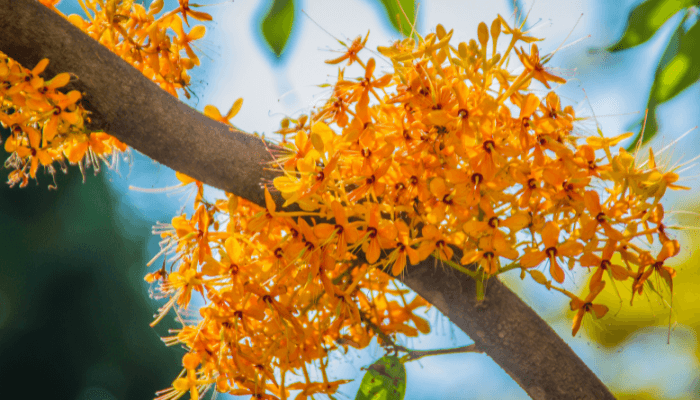
Content Index
Physical features of the Ashoka tree
Sorowless Tree or Ashoka Tree is an evergreen tree that retains most of its leaves throughout the year. It is originally a tree of the rainforests and grows to about 22 to 30 feet in height. It has shiny leaves that are soft, copper and red initially but become dark green after reaching maturity. It is a tall, lush and dense tree that has a shapely crown with leaves growing in clusters and close to each other.
It has a lifespan of about 50 years and blooms in its early stage when it is still growing. It bears flowers at six to nine years of age and produces fruits from July to early November. However, it is usually cut when it is about 20 years old for its bark as it has enormous medicinal uses.
This tree looks amazingly beautiful and mesmerizing when it is in full bloom. It has breathtaking foliage and sweet-scented flowers. The flowers can be seen in February till April and come in big bunches. They are long and shaped like tubes and have four oval lobes that open out. They are orangish-yellowish and turn crimson red before falling off. Bees and hummingbirds can be seen hovering near the flowers for their sweet nectar.
Apart from being a magnanimous tree, Ashoka also purifies the air in its surroundings. It absorbs toxic gases and pollutants from the atmosphere including particulate matter and gives out oxygen. Sitting in the shade of the Ashoka during the day is good for the lungs.
How to grow an Ashoka tree
Ashoka tree requires fertile, nutrient-rich and well-drained soil. It should be acidic and have a ph ranging from 5 to 7.5. It is said that loamy, clayey-loamy soil is ideal for cultivating this tree.
It is best to plant this tree in May and June and they grow faster by using the stem cutting method. They can also be grown by using their seeds but it is slower and more difficult this way.
If you want to grow an Ashoka tree from its seeds, then collect the seeds from the pods during the rainy season. Then sow the seeds in plastic bags and let the seedlings grow. Keep them in a partially shady place.
About one-year-old seedlings brought up in a nursery can be grown in 3 feet deep pits. They should not be planted in pots but can be grown in lawns or rows in parks, public places, roadside etc.
There are many varieties of this tree, one being larger, that grows naturally in forests, spreads quickly and needs space to grow. The wild varieties of Ashoka are becoming endangered and vulnerable due to habitat destruction and rampant deforestation. The second one is columnar and is commonly grown or cultivated.
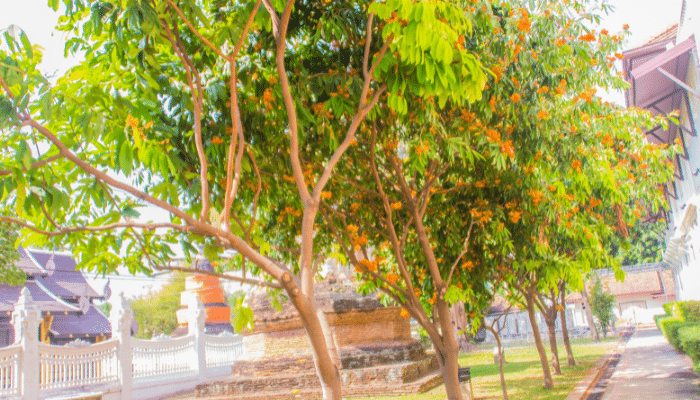
Health benefits of Ashoka tree
Ashoka tree is a medicinal tree that has many nutrients with amazing healing properties. These are highly beneficial for the body. It has essential oils, calcium, carbonic compounds of carbon and iron and its bark contains ketosterol. Let us look at the many health benefits of the tree that is said to take away all sorrows.
Ashoka- A women’s herb
Ashoka tree has numerous health benefits however it is particularly effective for treating women’s issues related to menstruation and infertility. The tree is called ‘Ashoka or sorrowless’ due to its homoeopathic qualities for doing away with all these reproductive problems and keeping women healthy.
The bark of this tree is used for treating menstrual issues such as Premenstrual Syndrome, Dysmenorrhea, Menorrhagia, cramps, abdominal pain and also uterine spasms.
This is because the bark has ample amounts of tannins, flavonoids, and glycosides that make a great and effective uterine tonic. It prevents heavy blood flow, eases pain, and also keeps the uterus healthy. Its bark also has phytoestrogens that control and regulates the menstrual cycle and normalises blood flow so that you get your menses on time.
Research has shown that Ashoka helps to attain hormonal balance in the women’s body while she is transitioning to menopause. It has quercetin, beta-sitosterol and luteolin that help to deal with the symptoms and discomfort associated with menopause such as hot flushes, night sweat, sleep disorders, mood swings, and also weight gain.
Lastly, Ashoka is also used to treat reproductive disorders among women in rural India. It is established that its bark helps in strengthening the uterus and aids in uterine muscle contractions.
It also promotes the endometrium and ovarian functions. The popularity of Ashoka in traditional medicine is also because it effectively treats endometriosis, which is one of the biggest causes of infertility among women.
Gets rid of acne and skin problems
The leaves and flowers of the Ashoka tree are quite effective in treating many skin conditions naturally. It can help to soothe itching, treat ulcers, eczema, psoriasis, dermatitis, scabies etc. Ashoka tree extracts can always be found among the list of ingredients in natural cosmetics and facial creams.
The bark of the tree is boiled and the potion then formed is applied to the skin to treat severe acne and boils. The decoction of its leaves or flowers can be consumed in small quantities as it gets rid of all the toxins from the blood and gives glowing skin. It also helps to deal with skin allergies, burns, rashes, inflammation and skin irritation.
Sharpens the mind
Ayurveda has established that consuming Ashoka tree extract regularly can improve and sharpen your intellect and memory. Mix Ashoka bark powder and Brahmi powder and take 1 teaspoon of this mixture in the morning and evenings with milk to attain a good memory. This is particularly great for growing children.
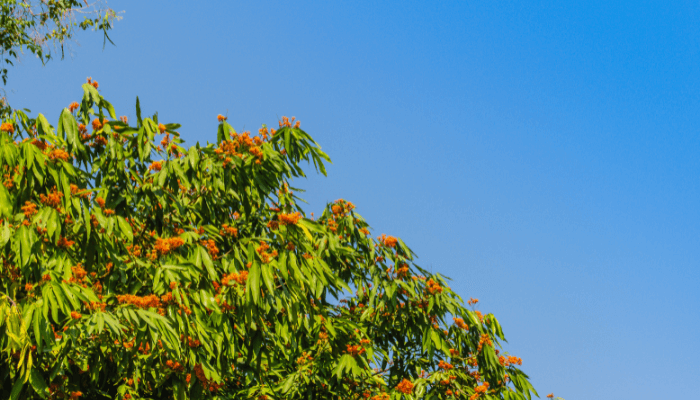
Treats Hemorrhagic dysentery
The flowers of the Ashoka tree are crushed, mixed with some water and consumed to treat hemorrhagic dysentery. This is a very effective natural way to control internal bleeding.
Gets rid of worms in the stomach, swelling and inflammation
The Ashoka tree has anti-fungal, antibacterial properties that help in flushing out worms from the intestines and the stomach. The decoction made from its leaves and bark provides relief from stomach pain, swelling, inflammation, burning sensation and also bloating.
Treats Piles, Diabetes and Diarrhea
A tonic prepared from dried flowers of Ashoka helps to treat diabetes as they regulate the blood sugar levels in the body. Also, a decoction made by boiling the bark of this tree with some other herbs aids in treating internal piles.
The leaves, flowers, and bark of the Ashoka tree help to relieve severe constipation and also treat diarrhoea. A herbal tonic of these components is available that helps to soothe the pain due to this condition.
Treats cataract
If someone has diabetes it can have an impact on their eyesight as well. Diabetic retinopathy, diabetic nephropathy, diabetic neuropathy are some conditions that affect the retina, nervous system and also kidneys.
It has been found that Ashoka tree extracts help to treat diabetic cataracts and also ophthalmic problems induced due to diabetes.
Flushes out kidney stones and treats asthma
The seeds of the Ashoka tree are made into powder and are consumed with water. This helps to get rid of kidney stones from the body naturally. Secondly, this seed powder is put in betel leaves and chewed properly. It is said that doing this regularly helps to effectively treat asthma and other breathing problems.
Provides relief from joint pain
The extracts of these tree parts act as an analgesic and they help to get rid of joint pain. All you have to do is make a paste of the bark powder, mixed with mustard oil and massage it on the knee or shoulder joints or even your back. It provides long-lasting relief and comfort.
Treats common fever
In Ayurveda and traditional medicine, Ashoka bark is used for treating fever. Research has found that the tree has antipyretic effects and flavonoids that help to quickly reduce body temperature and fight infections.
Ashoka seed powder and bark powder not only reduce fever but their effect lasts longer than a commonly used allopathic medicine called Aspirin. A study has shown that Ashoka extracts reduce body temperature for about 5 hours compared to aspirin that remains effective for only 4 hours.
Fights skin and breast cancer
Ashoka tree is popularly used for treating skin and breast cancer as it has antioxidants and anti-proliferative qualities. Scientists have established that the Ashoka tree can be used for treating cancer due to its chemical make-up. Chemical components present in its extracts trigger a process called apoptosis or cell death, which helps in the reduction of cancerous cells and it slows down the spread of cancer in the body.
Most medical practitioners agree that while chemotherapy and surgeries are best for stopping cancer growth, these can be supplemented with natural treatments which do not have any side effects. Ashoka leaves contain a bioactive compound called phenol that prevents the growth of breast tumours and can be used as a supplementary anti-cancer medicine.
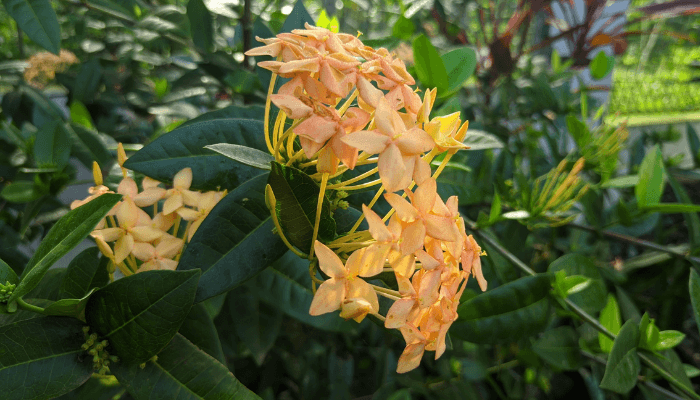
Side effects of the Ashoka tree
Although this tree has enormous health benefits, some people might be allergic to it or suffer from side effects if they consume it orally or in large quantities.
If women suffering from amenorrhea consume its extract in improper quantities, they may suffer from menstrual issues. If it is taken orally then it may cause stomach pain and digestive problems. Also, it is said that pregnant women should not consume its extract or tonics as it may cause complications in pregnancy.
Conclusion
Ashoka tree has a distinguished place in Ayurveda and traditional medicine due to its amazing healing properties. It is also called a women’s herb as it helps to treat most reproductive and menstrual issues. It is also effective in treating skin disorders, digestive issues, diabetes, asthma, joint pain and can even be used for treating skin and breast cancers.
Related Reading

